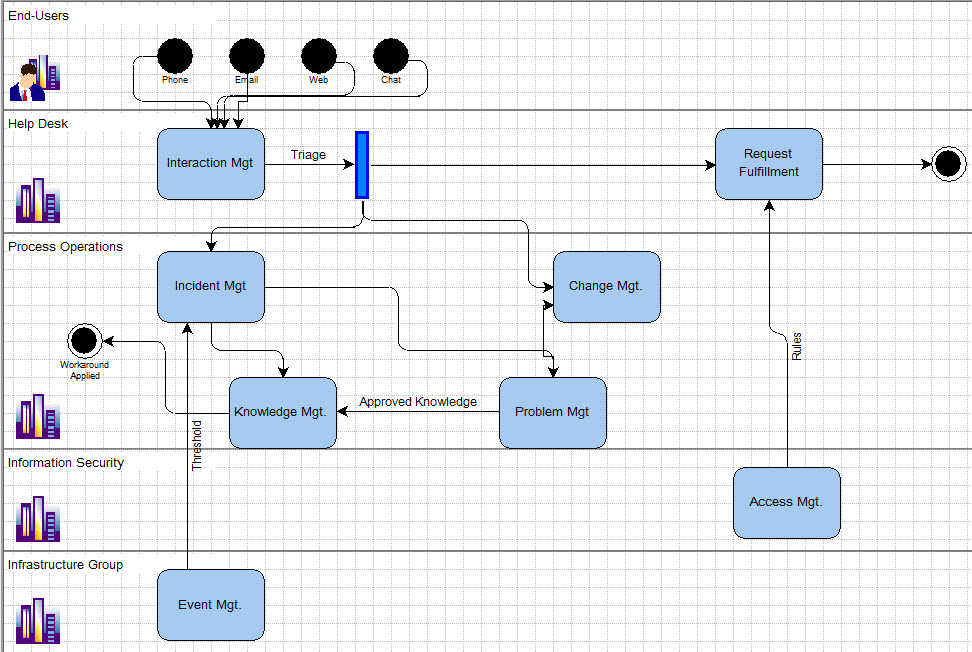Service Operation Process - High Level

The above high level process flow shows some of the relations between the
Service Operation processes.
It is a common misperception that Incident Management is ‘the Service Desk
process.’ This is untrue. Incidents are errors in the infrastructure that result
in degradations in service. Therefore Incidents occur everywhere, and everyone
in IT is a potential agent of Incident Management.
In the v2 standard Incident Management was getting stretched. A lot of this was
a result of this mis-perception of it as ‘the Service Desk process.’ Incident
Management was responsible for handling Service Requests; which are a class of
pre-approved Change.
In v3 these Service Requests are handled with their own separate process,
Request Fulfillment. These pre-approved Changes should be low risk, and each one
should be clearly defined with its own process flow and set of rules. Request
Fulfillment is heavily dependent on Access Management, also called ID
Management, to provide definitions on an individual’s role, status and rules for
accessing various applications and data.
Interaction Management is NOT an ITIL process. However, it is ‘the Service Desk
process.’ Use of a separate Interaction Management process allows for a separation
of Incident metrics from Requests for Information. Incidents reflect errors in
the infrastructure and should be measured as part of a separate process.
A separate Interaction Management process further allows for separate management
of the communications with end-users from the troubleshooting activities of
Incident Management. This allows for an easier consideration of tiering the
Service Desk; which may be appropriate for some organizations.
Event Management is often closely tied to Configuration Management, as the
discovery and monitoring tools are often managed in concert. Event thresholds
may raise Incidents directly.
Incident Management has two types of inputs to Problem Management. The first is
the raising of a Problem record for an issue for which root cause must be
determined. The decision to raise a problem is an organizational decision; it is
a commitment to devote resources to determine the underlying cause of an issue.
The second input from Incident Management to Problem Management is a new
workaround to resolve an Incident. Using the Knowledge sub-process (not to be
confused with the full KM process), Problem Management reviews all workarounds
to ensure their suitability. Approved workarounds are recorded in the Knowledge
Base and, in the pure model (rarely seen in the wild) all Incidents are closed
with reference to an approved workaround.
Change Management is a Service Transition process. It accepts inputs, in the
form of new and modified Requests for Change (RFC) from Incident, Problem and
Interaction Management.
